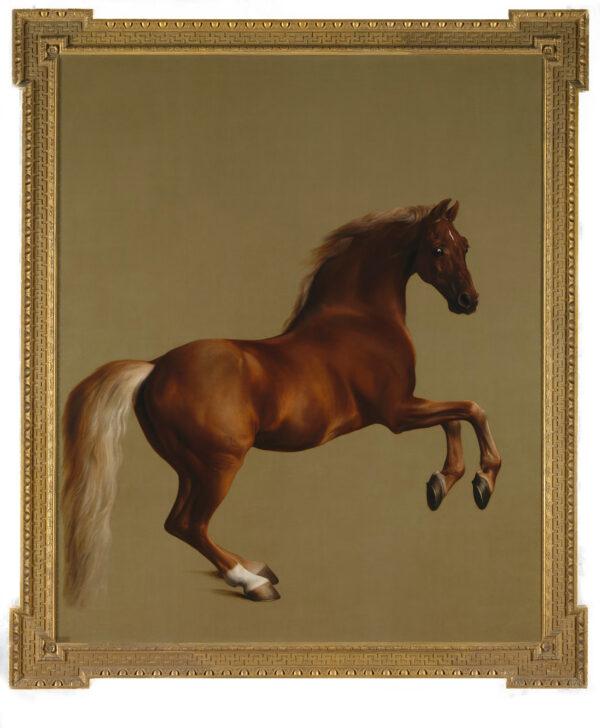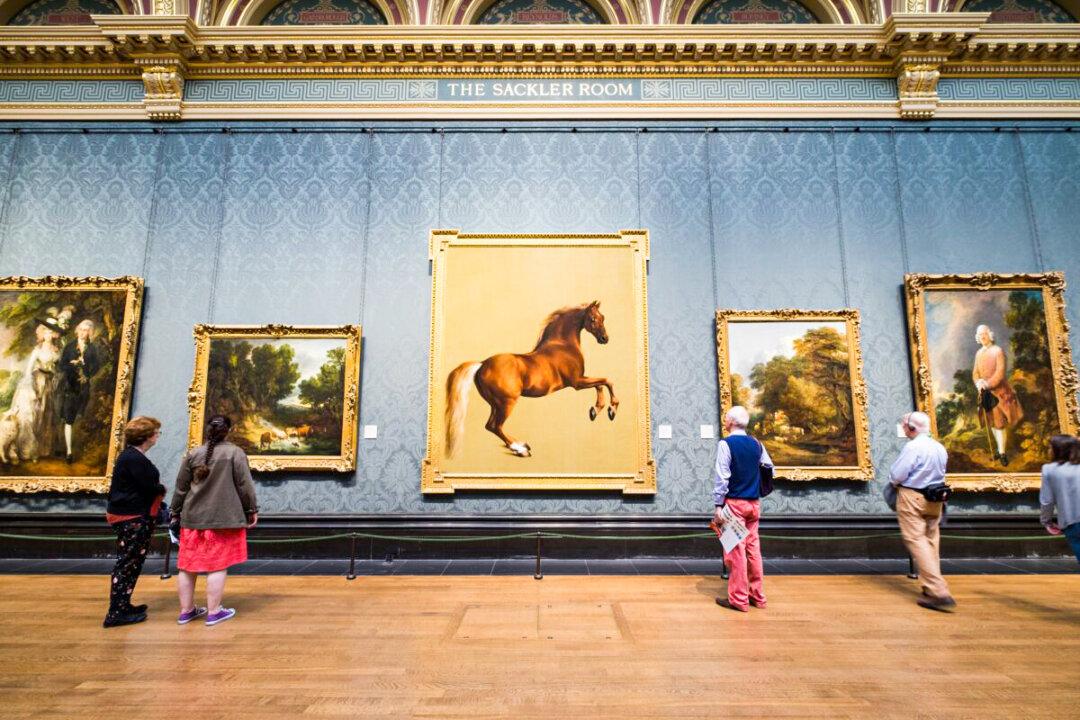LONDON—English artist George Stubbs painted a stallion so true to life that, as you approach, you can almost catch a whiff of him as he rears and tosses his mane. He’s a tower of strength, on high alert. And he’s not happy. His nostrils flare and his eyes bulge as he pulls his head back full of fear, or perhaps in a display of dominance. It’s a wild moment to witness, and there’s no sense in the painting of what will happen next.

“Whistlejacket,” circa 1762, by George Stubbs. Oil on canvas; 116 5/8 inches by 97 5/8 inches. The National Gallery, London. The National Gallery, London






